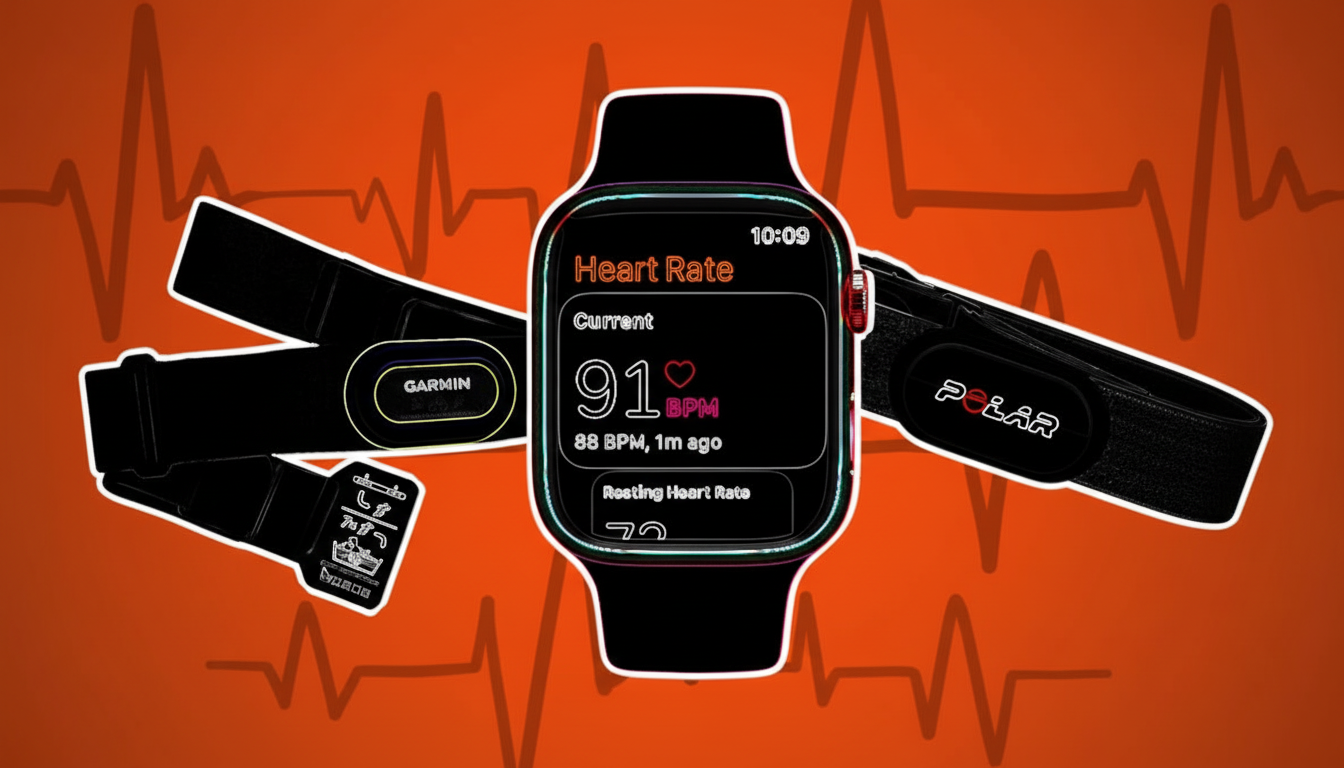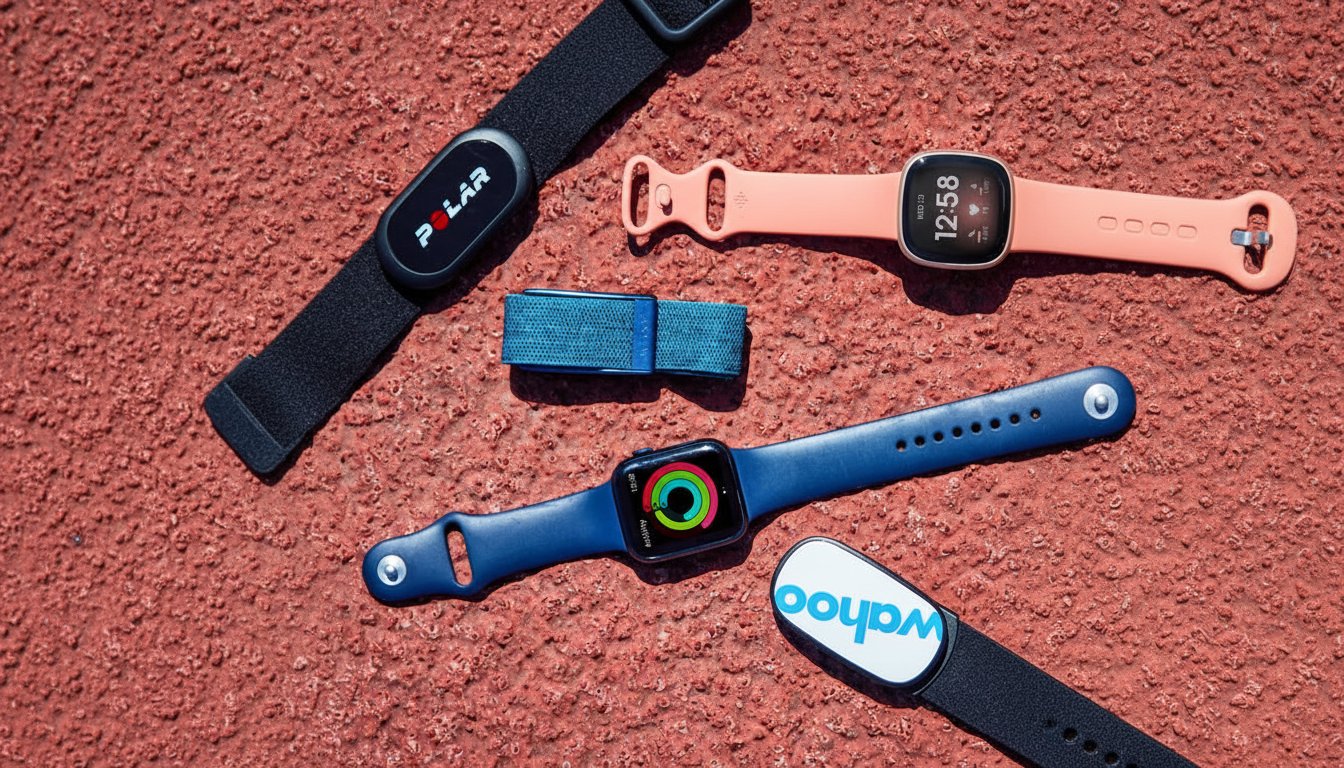Not all heart rate monitors are created equal. Following months of side-by-side testing both in the lab and on the track, I’ve weighed all the best performers from chest straps to armbands, smartwatches to hybrids and even a smart ring. The headline: Chest straps continue to set the accuracy standard, but a few wrist and arm wearables have closed the gap for daily training and health tracking. “Heart rate sensors in wearables are getting more accurate.”
How I Tested and What Heart Rate Accuracy Is
I ran multiple treadmill intervals, outdoor tempo runs, cycling, rowing and strength circuits, and wore them every day while taking simultaneous recordings on each device plus a control strap. Error was calculated as mean absolute percentage error (MAPE), which has been used in reporting by JAMA Cardiology and sports science labs.
- How I Tested and What Heart Rate Accuracy Is
- Best Chest Strap for Pure Precision and Accuracy
- Best Armband for Comfort and a Secure Fit
- Best Smartwatch for Everyday Training Accuracy
- Best for Subtle 24/7 Health and Recovery Tracking
- Buying Advice: What Matters Most for Accuracy and Fit
- The Bottom Line on Heart Rate Monitor Choices

During steady-state or submaximal effort, the best chest straps had a deviation of only 1–2% from control. The top armband averaged 2–4%. The top smartwatches each held 2–5% at endurance pace, which increase to much larger spikes during HIIT from motion artifacts and perfusion changes — limitations the American College of Sports Medicine acknowledges, which I observed in my logs.
Best Chest Strap for Pure Precision and Accuracy
The H10 is still my company’s most accurate strap. Over multiple 5×3-min sets with 2 minutes of recovery, the H10 showed a MAPE between 0.8% and 1.5% and it followed changes in intensity positively (surge and decrease), without lag. Dual Bluetooth plus ANT+ allow you to pair multiple devices, and the coin cell that powers it will last for months of training. If you pursue zones or HRV analysis during exercise, this is the solid, set-and-forget option.
If you prefer a rechargeable device, Wahoo’s TICKR Heart Rate provided 1–2% MAPE across my sessions and rock-solid connectivity. The magnetic charger is painless and the battery seemed to last for 80–100 hours of real use per charge. There’s no onboard memory, and water isn’t friendly with live broadcasts so it isn’t for pool sessions, but if you run-bike-gym this is grand.
Best Armband for Comfort and a Secure Fit
The Verity Sense by Polar is the optical sensor I recommend to runners who hate chest straps. Worn on the forearm or biceps, it rated in a consistent 2–4% MAPE range and far exceeded typical wrist wearables during kettlebell work, rowing and burpee-focused circuits that wrist flexion ruins for most PPG sensors. It’s lightweight, secure, rechargeable and natively supports both Bluetooth and ANT+.
Pro tip from my test: Tighten it more than you think and make sure it’s not sitting on a tendon. A secure fit cuts down on motion noise and enhances readings, particularly during sprints and upper-body moves.
Best Smartwatch for Everyday Training Accuracy
For Android users, the Google Pixel Watch impressed with wrist-based accuracy, often measuring to within 2–3% of a chest strap for tempo runs and steady rides. It did transitions better than the majority of peers and combines that data with useful training views (like real-time zones, HR recovery, readiness-style insights via the Fitbit platform). ECG backing and reliable sleep staging provide useful context for recovery.

The latest Apple Watch is still the best workout partner for iPhone users. Its optical sensor and algorithms resulted in tight tracking in endurance zones and fast lock-on at the start of a workout. Bonus points for having an ECG, and for high/low heart rate alerts, irregular rhythm notifications, and good apps (including strong coaching and analysis tools used by many coaches and clinicians).
Best for Subtle 24/7 Health and Recovery Tracking
If you’re interested in discreet, long battery monitoring, although with little bona fide health features, then the Withings ScanWatch 2 is my recommended hybrid. It’s great for resting heart rate, overnight trends and on-demand ECG with atrial fibrillation detection — and lasts weeks per charge. It’s not as reliable during all-out intervals as dedicated sports watches but for a wellness-first device, it delivers.
In the smallest form factor, it is unsurpassed for night-time heart rate and HRV. It provided me with tight, repeatable overnight trends (along with useful readiness scores) in my testing. It’s not a substitute for real-time workout HR (rings are still terrible at high-motion sampling), but, as a recovery lens for 24/7, it’s properly brilliant.
Buying Advice: What Matters Most for Accuracy and Fit
Choose your sensor type according to priority: chest strap for training accuracy; armband for comfort with near-strap accuracy; smartwatch for an in-between experience; and hybrid or ring for 24-hour trends. Fit is make-or-break — a snug, stable fit benefits data more than any spec-sheet promise.
Verify connectivity (multi-Bluetooth and ANT+ for gym equipment and bike computers), battery life (coin cell vs rechargeable) and ecosystem analytics. Seek published validation or independent testing; chest straps always meet the strictest thresholds, while the accuracy of optical wearables can vary more with skin tone, tattoos, temperature and movement, according to both sports medicine researchers and device makers.
The Bottom Line on Heart Rate Monitor Choices
For pinpoint accuracy, a chest strap like the Polar H10 — or Wahoo’s rechargeable take — still reigns. If you desire more features and fewer wires, the latest Pixel Watch and Apple Watch offer serious training performance along with ECG heart measurements and sleep- and recovery-tracking insights. For discreet, long-wear health tracking, Withings’ hybrid and the Oura Ring are still a cut above the rest. Pick the form factor you’ll actually keep on, and your data — and training — will improve overnight.

